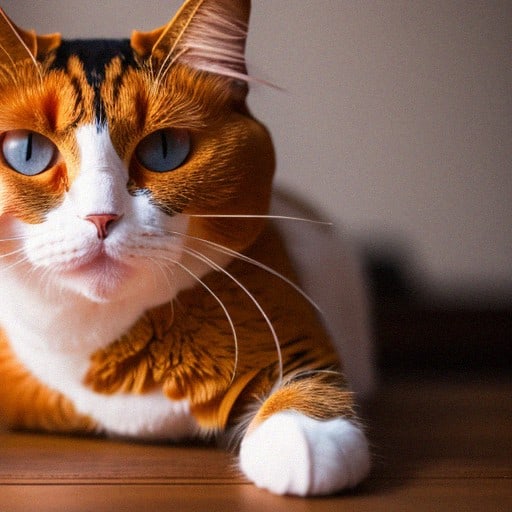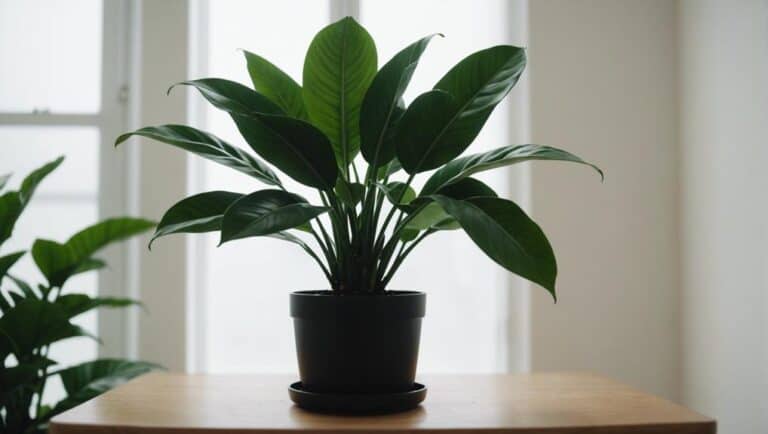Effortless Solutions: A Professional Guide on Eliminating Cat Hair from Your Home
Welcome to “Effortless Solutions: A Professional Guide on Eliminating Cat Hair from Your Home.” If you’re a proud cat owner, you know that the joyful companionship and love your feline friend brings into your life can sometimes come with an unwanted side effect – cat hair.
It seems like no matter how much we adore our fluffy friends, dealing with their shedding can be a never-ending battle. But fear not! In this comprehensive guide, we will explore expert-recommended techniques and effective products that will help you maintain a clean and hair-free home without sacrificing quality time with your beloved pet.
So, say goodbye to fur-covered sofas and hello to a pristine living space – let’s dive in together!
Understanding the Basics: Why Do Cats Shed?
Cats shed their fur as part of a natural process to maintain a healthy coat. Shedding helps them get rid of old, damaged hair and replace it with new growth. While all cats shed to some extent, certain factors can influence the amount of shedding they experience.
Factors that Affect Cat Shedding
- Breed: Some cat breeds, such as Persians and Maine Coons, are known for their thick coats and consequently tend to shed more.
- Seasonal changes: Cats often shed more during springtime as they prepare for warmer weather.
- Health issues: Certain medical conditions or poor nutrition can lead to excessive shedding in cats.
Understanding why your cat sheds can help you implement effective strategies for managing the accumulation of cat hair in your home.

Grooming Tips for a Hair-Free Home
Regular brushing is key
Make sure to brush your cat regularly to help prevent excess hair from shedding around your home. Use a comb or brush specifically designed for cats, and gently work through their fur in the direction of hair growth. This will not only remove loose fur, but also stimulate natural oil production in their skin, keeping their coat healthier.
Bathing and moisturizing
While cats are typically self-groomers, giving them an occasional bath can be helpful in reducing the amount of loose hair they shed. Use a gentle shampoo that is specifically formulated for cats and rinse thoroughly to ensure no residue is left behind. Additionally, providing moisture to your cat’s skin through specialized cat-friendly moisturizers can also minimize excessive shedding.
Keep up with regular cleaning routines
In addition to grooming your cat, it’s important to maintain a clean living space. Vacuum carpets and furniture at least once a week using vacuum cleaners equipped with HEPA filters capable of capturing fine pet hairs effectively. Wiping down surfaces with microfiber cloths will further pick up any stray hairs.
Essential Tools and Products for Tackling Cat Hair
Brushes: Invest in a high-quality cat brush to remove loose hair from your furry friend. Look for brushes with fine, closely spaced bristles that will effectively trap and remove shedding hairs.
Lint rollers: Keep several lint rollers handy for quick touch-ups on clothing and furniture. Roll them over surfaces to pick up stray hairs easily.
Vacuum cleaner: Choose a vacuum specifically designed to handle pet hair. Opt for models with powerful suction and special attachments that can efficiently clean upholstery, carpets, and hard-to-reach areas.
Furniture covers: Protect your furniture from cat hair by using washable covers or throws. These are easy to clean and can be removed when guests come over.
Air purifiers: Consider investing in an air purifier equipped with HEPA filters to help capture cat dander floating in the air. This will reduce the amount of loose hair circulating around your home.
- Brushing Basics
Make brushing a regular part of your grooming routine at least once a week—or more often if needed—to minimize shedding.
- Grooming Gloves
Try using grooming gloves, which have small rubber nubs on them that grab onto loose fur as you stroke your cat’s coat.
- Shedding Shampoos
Use specially formulated shampoos made for reducing shedding during bath time. These products can help loosen dead hairs so they’re easier to remove while washing.
By utilizing these essential tools and products consistently, you’ll effectively combat the nuisance of cat hair buildup throughout your home effortlessly
Creating a Cat-Friendly Cleaning Routine
When it comes to keeping your home clean and free from cat hair, establishing a cat-friendly cleaning routine is crucial. Here are some quick tips to help you get started:
- Regular grooming sessions: By brushing your cat regularly, you can significantly reduce shedding and the amount of loose hair in your home. Invest in a high-quality brush that suits your cat’s coat type, and make this a part of their daily routine.
- Vacuuming made easy: Opt for a vacuum cleaner with strong suction power and specialized attachments specifically designed for pet hair removal. Be sure to vacuum carpets, furniture, curtains, and any other areas where cat hair tends to accumulate.
- Clean with pet-friendly products: Keep your furry friend safe by choosing cleaning products that are specifically formulated for use around pets. Avoid using harsh chemicals or cleaners with strong scents as they may irritate your cat’s senses.
- Tackle upholstery with care: To remove stubborn cat hair from upholstered furniture, use a slightly damp rubber glove or fabric softener sheets to wipe down the surface gently in one direction. This will help lift up the hairs without damaging the fabric.
- Frequent washing of bedding: Your cat’s favorite resting spots should be washed regularly to prevent build-up of fur and allergens. Use hot water when laundering bedding items like blankets or cushion covers to effectively remove all traces of hair.
By implementing these simple strategies into your cleaning routine, you’ll be on your way to maintaining a clean and fur-free home environment for both you and your beloved feline companion!
Preventing Cat Hair from Accumulating on Furniture
Cover your furniture
- Use blankets or throws to protect your furniture from cat hair accumulation.
- Choose covers that are easy to wash and remove for regular cleaning.
Invest in a quality vacuum cleaner
- Opt for a vacuum cleaner with good suction power and a brush attachment specifically designed for pet hair removal.
- Regularly vacuum your furniture to eliminate any loose cat hairs.
Apply anti-static spray
- Spraying an anti-static agent onto fabric surfaces can help repel cat hair, making it easier to wipe away.
Remember, preventing cat hair from accumulating on furniture requires consistent effort. By following these simple tips, you can maintain clean and fur-free upholstery throughout your home.
Keeping Cat Hair off Your Clothes and Fabrics
One of the biggest challenges cat owners face is keeping their clothes and fabrics free from cat hair. Here are some simple tips to help you tackle this problem effortlessly:
- Regular grooming: Brushing your cat regularly helps to remove loose hair, reducing the amount of shedding on your clothes and furniture.
- Cover up: If you know you’ll be cuddling with your furry friend, wear a lint roller or use a sticky tape to remove any unwanted fur afterward.
- Invest in slipcovers: Consider using slipcovers for furniture that your cat frequents, as they can be easily removed and washed to eliminate trapped hairs.
- Launder wisely: When washing clothes or fabrics covered in cat hair, add a dryer sheet or ½ cup of white vinegar during the rinse cycle to loosen pet hair before it ends up on clean garments.
- Dress strategically: Opt for clothing colors that camouflage cat hair well—blacks, grays, and browns tend to hide stray fur better than lighter colors like whites or creams.
Remember, eliminating all traces of cat hair may require some extra effort but following these guidelines will undoubtedly make it easier for you to maintain cleaner clothes and fabrics while enjoying the company of your favorite feline companion!
Special Considerations for Allergy Sufferers
- Invest in a High-Quality Air Purifier: An air purifier with a HEPA filter can help remove cat hair and allergens from the air, providing relief for allergy sufferers. Make sure to clean or replace the filter regularly.
- Create Cat-Free Zones: Designate certain areas of your home as off-limits to cats. This will enable allergy sufferers to have spaces where they can breathe easily without worrying about cat hair and dander.
- Regular Grooming is Essential: Brushing your cat frequently can significantly reduce shedding and limit the amount of loose hair in your home. It’s best to have someone who isn’t allergic handle this task if possible.
Allergies to cats are common among individuals, with symptoms such as sneezing, itching, and watery eyes causing discomfort. To minimize these issues when living with cats despite having allergies, there are several special considerations that should be taken into account.
One effective solution is investing in a high-quality air purifier equipped with a HEPA filter specifically designed to capture airborne pet allergens like cat hair. With regular cleaning or replacing of filters according to manufacturer guidelines, these devices can substantially improve indoor air quality by removing not only visible but also microscopic particles from circulation.
To provide additional relief for allergy sufferers within the household it’s helpful designating certain rooms or areas as “cat-free zones.” By limiting their time spent in these designated spaces—such as bedrooms—it creates an environment where those susceptible aren’t constantly exposed to excessive amounts of cat hair and dander.
Another crucial step is maintaining proper grooming habits for your furry friend. Frequent brushing sessions using specialized tools help control shedding by trapping loose hairs before they end up all over furniture or floors—where they may become respiratory irritants for those allergic.—while simultaneously reducing dandruff production on the skin itself
Dealing with Excessive Shedding: When to Seek Professional Help
When to Seek Professional Help for Excessive Shedding
If your cat’s shedding is excessive and causing a major nuisance in your home, it may be time to seek professional help. Here are some signs that indicate you should consult a professional:
- Persistent shedding: If your cat sheds excessively throughout the year and there doesn’t seem to be any change in their shedding patterns, it could be indicative of an underlying issue that requires professional attention.
- Visible skin irritation or hair loss: If you notice bald patches or areas of redness on your cat’s skin, it could be a sign of allergies, parasites, or another medical condition that needs diagnosis and treatment by a veterinarian.
- Behavioral changes: Excessive shedding accompanied by changes in your cat’s behavior such as decreased appetite, lethargy, or aggression could suggest an underlying health problem requiring immediate attention from a veterinary professional.
It is important not to ignore these signs as they can indicate serious health concerns for your feline friend. Consulting with professionals will ensure your pet receives appropriate care and treatment for their excessive shedding.







One Comment